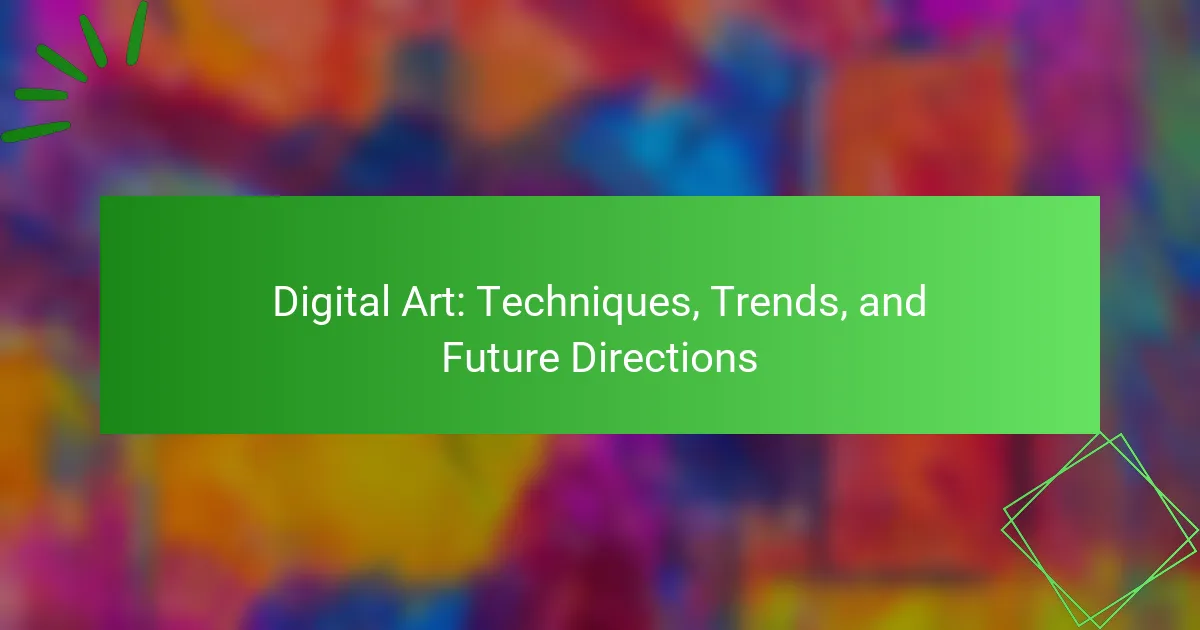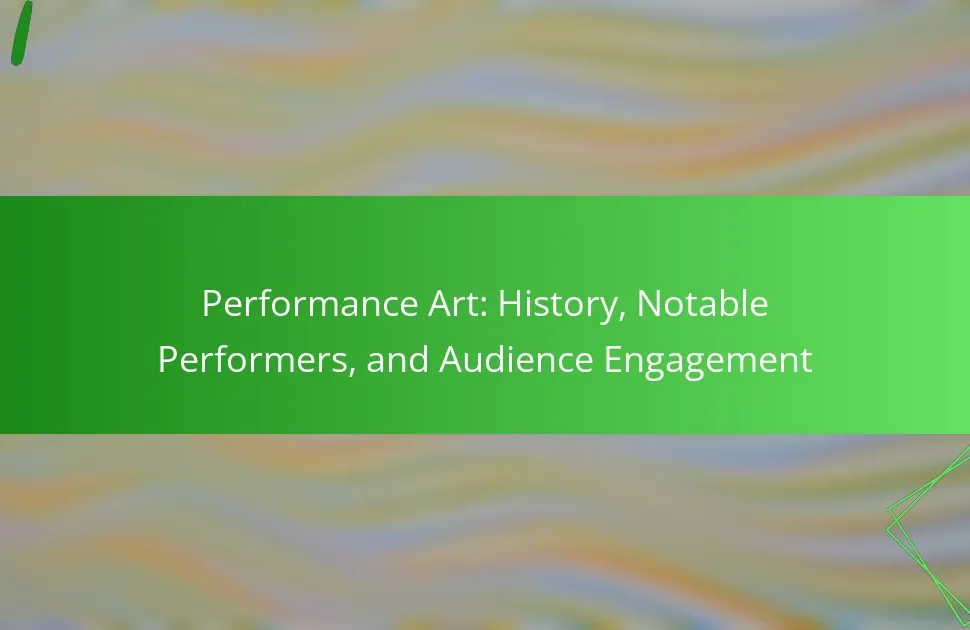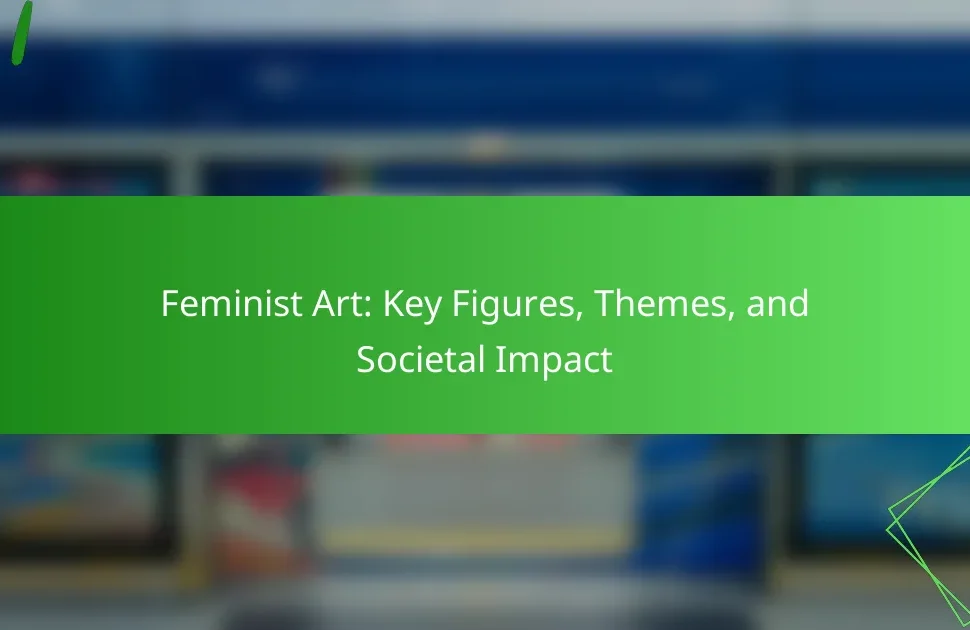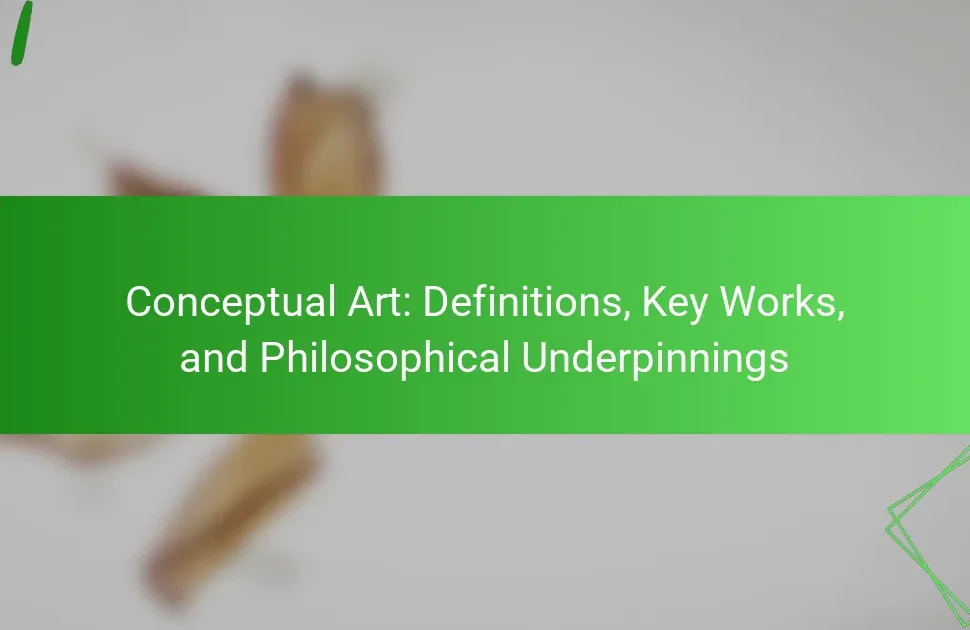Digital art is revolutionizing creative expression through techniques like drawing, painting, and 3D modeling. Emerging trends include augmented reality and artificial intelligence, shaping the future landscape. Challenges such as market saturation and technical limitations affect artists’ careers. Cultural influences and continuous learning are essential for aspiring digital artists to thrive in this dynamic field.
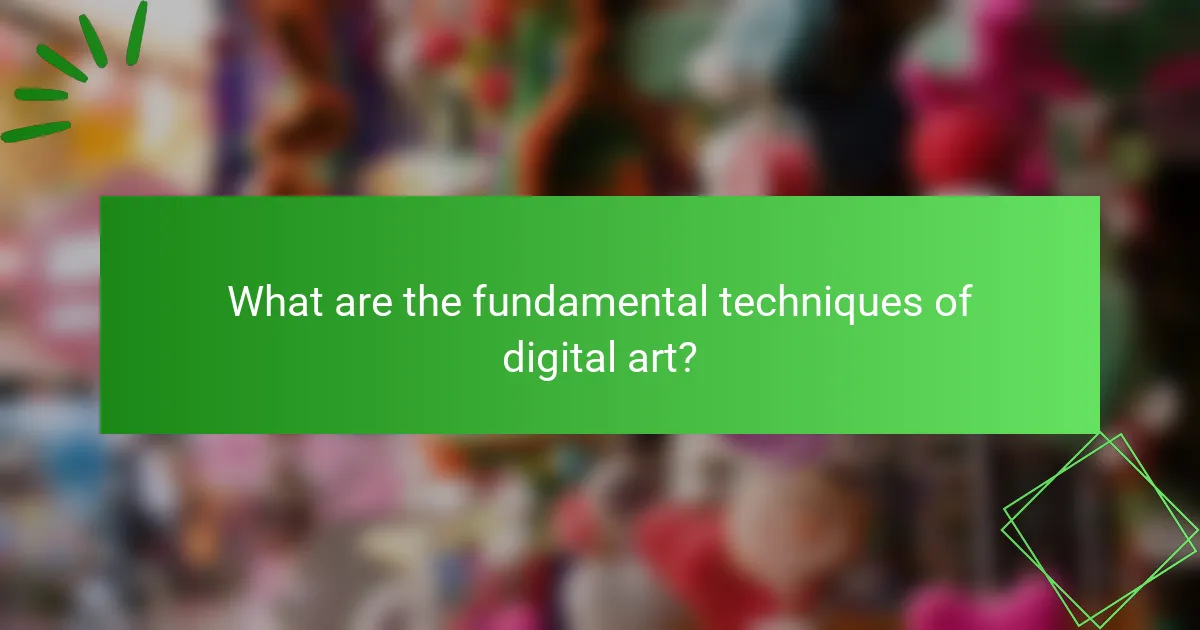
What are the fundamental techniques of digital art?
The fundamental techniques of digital art include drawing, painting, 3D modeling, and photo manipulation. Each technique utilizes software tools to create unique visual expressions.
Digital drawing employs styluses and tablets for precise line work. Digital painting mimics traditional painting techniques using brushes and textures. 3D modeling involves creating three-dimensional objects for animations or visualizations. Photo manipulation combines and alters images to produce surreal or enhanced visuals.
Emerging trends in digital art focus on augmented reality and interactive installations, expanding the boundaries of artistic expression. The future of digital art will likely integrate artificial intelligence, offering new creative possibilities.
How does digital painting differ from traditional painting?
Digital painting utilizes technology to create art, while traditional painting relies on physical mediums. Digital art offers advantages like easy editing and unlimited colors. Traditional methods emphasize texture and tactile experience. Both forms share techniques but differ in tools and processes. Digital art often incorporates software features that enhance creativity, such as layering and undo options. Traditional painting fosters a direct connection with materials, influencing the artist’s approach and final outcome.
What role does software play in digital art creation?
Software is essential in digital art creation as it provides tools for design, editing, and collaboration. It enables artists to experiment with various techniques, such as layering and blending, enhancing creativity and efficiency. Programs like Adobe Photoshop and Procreate offer unique features that cater to different artistic styles, allowing for high customization. Furthermore, software facilitates the integration of emerging technologies like virtual reality and artificial intelligence, shaping future artistic trends.
Which tools are essential for digital artists?
Essential tools for digital artists include graphic tablets, software like Adobe Photoshop, and styluses. These tools enhance creativity and precision, enabling artists to create detailed digital artwork.
Graphic tablets provide pressure sensitivity, allowing for nuanced brush strokes. Adobe Photoshop offers extensive features for editing and illustration, making it a popular choice. Styluses, particularly those with tilt and pressure sensitivity, improve drawing accuracy.
Other notable tools include 3D modeling software like Blender and digital painting programs such as Corel Painter. These tools expand the range of artistic expression and techniques available to digital artists.
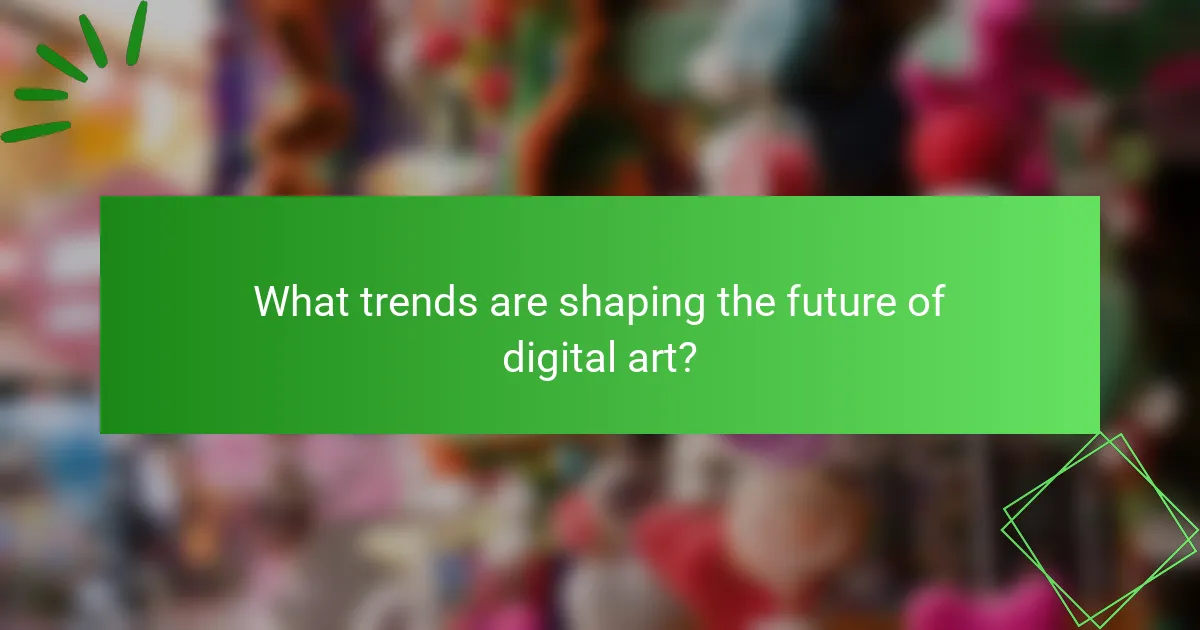
What trends are shaping the future of digital art?
Emerging technologies and evolving aesthetics are shaping the future of digital art. Key trends include the rise of artificial intelligence in art creation, increased use of virtual and augmented reality, and the growing popularity of NFTs. Artists are exploring innovative techniques, such as generative art, which utilizes algorithms to create unique pieces. Additionally, collaborations between artists and technologists are fostering new forms of expression, pushing the boundaries of traditional art forms.
How are social media platforms influencing digital art visibility?
Social media platforms significantly enhance digital art visibility by providing artists with global audiences. They facilitate instant sharing, community engagement, and direct feedback. Platforms like Instagram and Pinterest serve as visual galleries, allowing artists to showcase their work effectively. This visibility can lead to increased opportunities for collaborations, commissions, and sales. As a result, social media has become a vital tool for emerging and established artists alike, transforming how art is discovered and consumed.
What emerging styles are gaining popularity among digital artists?
Emerging styles gaining popularity among digital artists include 3D art, augmented reality (AR) art, and generative art. These techniques leverage technology to create immersive experiences and unique visual expressions. 3D art allows for intricate designs and realistic renderings. AR art blends digital elements with the physical world, enhancing viewer interaction. Generative art utilizes algorithms to produce innovative patterns and forms, showcasing the intersection of creativity and programming.
How does the NFT market impact digital art valuation?
The NFT market significantly enhances digital art valuation by providing verifiable ownership and scarcity. This transformation allows artists to monetize their work directly while attracting collectors seeking unique assets. NFTs also foster new revenue streams through royalties on secondary sales, increasing the long-term value of digital art. As a result, the market has shifted perceptions of digital art from mere reproductions to valuable, collectible assets.
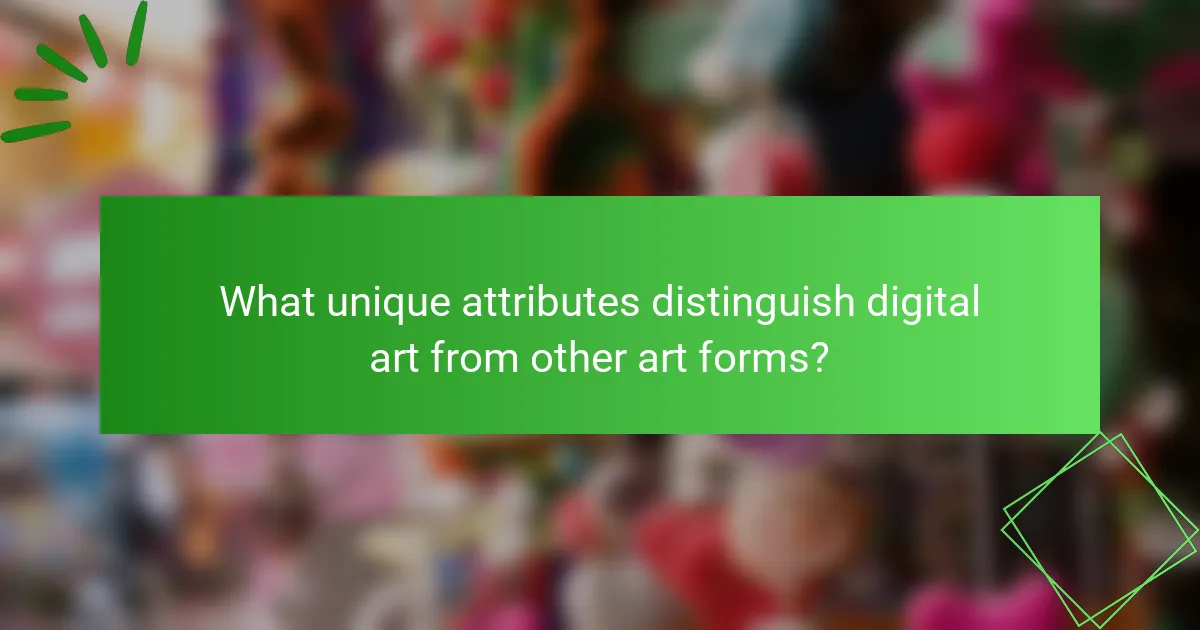
What unique attributes distinguish digital art from other art forms?
Digital art is distinguished by its reliance on technology, interactivity, and versatility. Unlike traditional art forms, digital art utilizes software and hardware as primary tools, allowing for unique creation and manipulation of images. Its ability to incorporate multimedia elements, such as animation and sound, sets it apart from static forms of art. Additionally, digital art often encourages viewer engagement through interactive features, fostering a dynamic relationship between the artwork and the audience. This interactivity is a rare attribute that enhances the viewer’s experience and distinguishes digital art in the contemporary art landscape.
How does interactivity enhance the digital art experience?
Interactivity significantly enhances the digital art experience by engaging viewers and fostering a deeper emotional connection. Interactive elements, such as user participation and real-time feedback, allow audiences to influence the artwork, creating a unique experience for each individual. This personalization transforms passive observation into active engagement, making the art more memorable and impactful. Moreover, interactivity can incorporate multimedia components, such as sound and animation, enriching the sensory experience and expanding the boundaries of traditional art forms. As a result, digital art evolves into a dynamic medium that reflects the viewer’s actions and choices, highlighting the collaborative nature of contemporary art practices.
What is the significance of animation in digital art?
Animation enhances digital art by adding depth, movement, and engagement. It transforms static visuals into dynamic experiences, capturing viewers’ attention. This technique allows artists to convey narratives, evoke emotions, and create immersive environments. As a result, animation broadens the creative possibilities within digital art, making it more interactive and appealing. The integration of animation in digital art is a unique attribute that distinguishes it from traditional forms, pushing the boundaries of artistic expression.
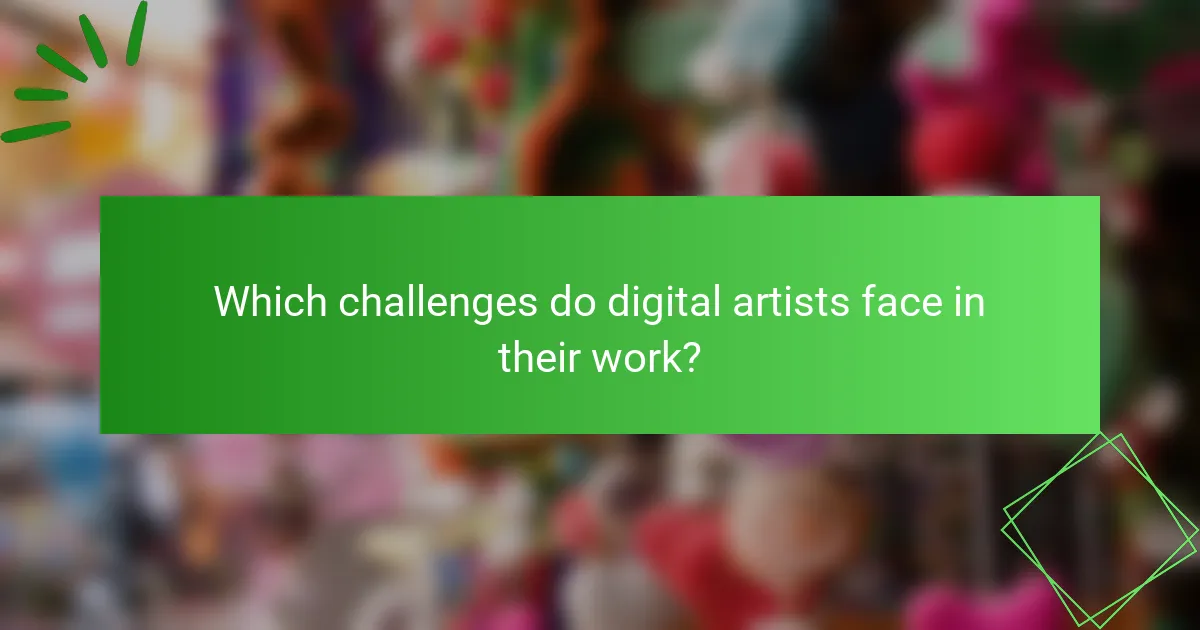
Which challenges do digital artists face in their work?
Digital artists face various challenges, including technical limitations, market saturation, and maintaining creativity. These obstacles can hinder their ability to produce innovative work and gain recognition.
Technical limitations often arise from software constraints or hardware inadequacies, impacting productivity. Market saturation means many artists compete for attention, making it difficult to stand out. Maintaining creativity can be challenging due to pressure for consistent output and the need to adapt to evolving trends.
Additionally, artists may struggle with the business side of their work, such as pricing, marketing, and managing client relationships. These factors collectively shape the digital art landscape, influencing how artists navigate their careers.
How can copyright issues affect digital art?
Copyright issues can significantly hinder digital art by limiting creators’ rights and potential revenue. Artists may face challenges in protecting their work from unauthorized use or reproduction. Additionally, infringement claims can lead to legal disputes, impacting an artist’s reputation and financial stability. The rise of digital platforms complicates enforcement, as artworks can be easily shared and altered. Understanding copyright laws is essential for artists to safeguard their creations and navigate the evolving digital landscape effectively.
What are common technical limitations in digital art creation?
Common technical limitations in digital art creation include hardware constraints, software compatibility issues, and file size restrictions. Artists often face challenges with processing power, leading to lag during complex tasks. Limited software capabilities can hinder creative expression, while large file sizes may restrict sharing and storage options. Additionally, the learning curve associated with advanced tools can impede productivity. These factors collectively affect the efficiency and quality of digital art production.
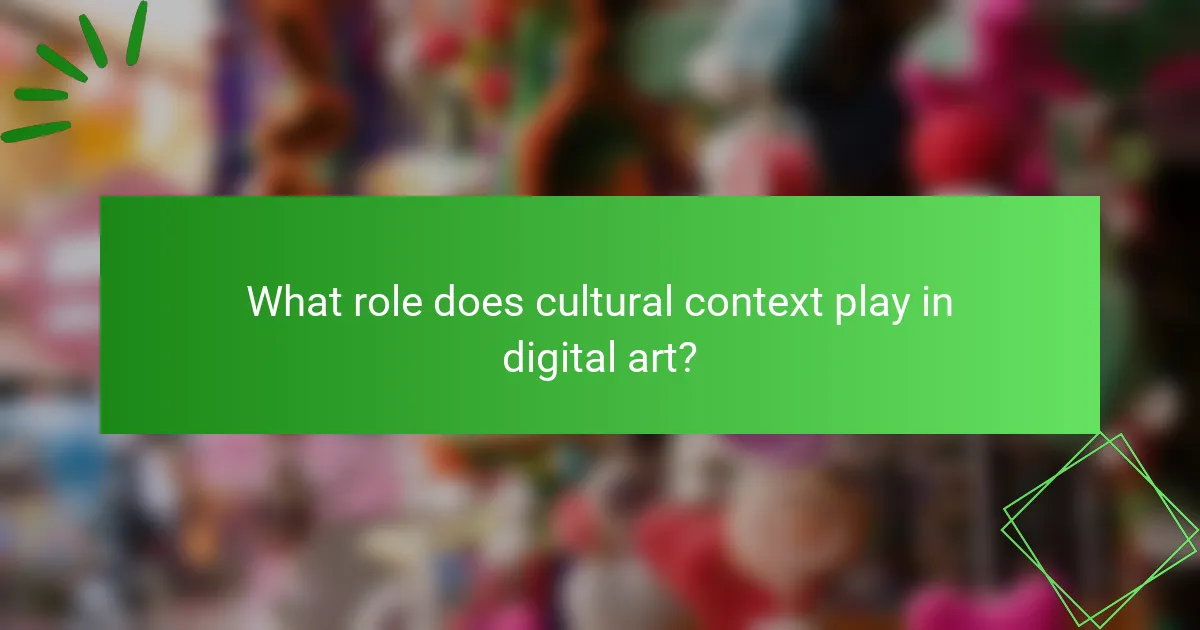
What role does cultural context play in digital art?
Cultural context significantly influences digital art by shaping themes, styles, and audience perceptions. Artists draw inspiration from their cultural backgrounds, which informs their creative choices and techniques. For instance, traditional motifs may blend with modern technology, creating unique hybrid forms. This interplay reflects societal values and historical narratives, allowing digital art to serve as a commentary on contemporary issues. As globalization increases, cross-cultural exchanges enrich digital art, fostering innovation and diversity in expression.
How do regional styles influence digital art aesthetics?
Regional styles significantly shape digital art aesthetics by introducing unique cultural influences and visual languages. These styles often reflect local traditions, color palettes, and thematic elements, enriching the global digital art landscape. For instance, Japanese digital art frequently incorporates minimalist design and nature motifs, while African digital artists may emphasize vibrant colors and patterns rooted in their heritage. Such distinctions create diverse artistic expressions, allowing artists to connect with audiences on a cultural level. The interplay of regional styles fosters innovation, encouraging artists to blend techniques and experiment with new forms, ultimately pushing the boundaries of digital artistry.
What are the implications of globalization on digital art trends?
Globalization significantly influences digital art trends by fostering cross-cultural exchanges and diverse artistic styles. Artists now access global platforms, enabling broader audience reach and collaboration. This interconnectedness encourages innovation, blending traditional and contemporary techniques. As a result, digital art embraces multicultural influences, enhancing creativity and expanding thematic exploration. The rise of social media accelerates trend dissemination, allowing artists to adapt rapidly to shifting tastes. Overall, globalization drives a dynamic evolution in digital art, characterized by diversity and accessibility.
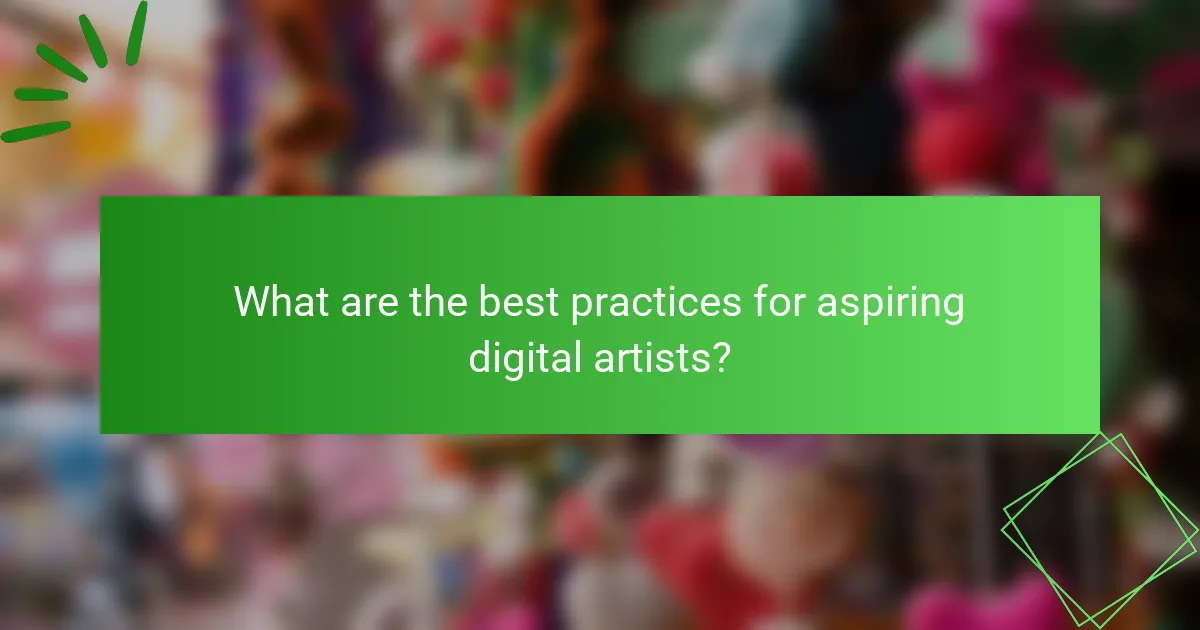
What are the best practices for aspiring digital artists?
Aspiring digital artists should focus on practice, continuous learning, and networking. Developing a unique style is essential, as is mastering tools like Adobe Photoshop and Procreate.
Participating in online communities can provide valuable feedback and inspiration. Staying updated on trends, such as 3D art and augmented reality, will keep your work relevant. Lastly, building a strong portfolio showcases your skills and creativity effectively.
How can artists effectively market their digital art?
Artists can effectively market their digital art by leveraging social media, building an online portfolio, and engaging with their audience. Utilizing platforms like Instagram and Pinterest showcases visual work and attracts potential buyers. Creating a personal website or using portfolio sites enhances visibility and credibility. Engaging with followers through comments and live sessions fosters community and loyalty. Collaborating with other artists or influencers can expand reach and introduce new audiences. Regularly updating content keeps the audience engaged and informed about new works or projects.
What common mistakes should digital artists avoid?
Digital artists should avoid common mistakes that hinder their growth and creativity. Key errors include neglecting foundational skills, over-relying on software tools, ignoring feedback, and failing to develop a unique style.
1. Neglecting foundational skills: Mastering basic drawing and design principles is essential for effective digital art creation.
2. Over-relying on software tools: While tools enhance creativity, excessive dependence can stifle artistic growth.
3. Ignoring feedback: Constructive criticism is vital for improvement; dismissing it can limit artistic development.
4. Failing to develop a unique style: Artists should strive to create a distinctive voice to stand out in a competitive field.
How can continuous learning enhance a digital artist’s skills?
Continuous learning significantly enhances a digital artist’s skills by fostering adaptability and innovation. Engaging with new techniques and trends allows artists to refine their style and expand their creative toolkit. For example, mastering emerging software can lead to unique artistic expressions. Additionally, participating in workshops and online courses can provide valuable feedback and networking opportunities. This commitment to ongoing education ensures artists remain relevant in a rapidly evolving industry.
